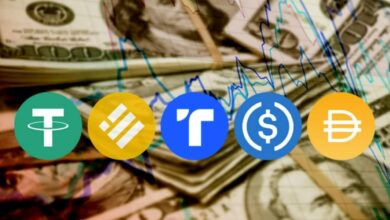Bank of America Signals Stablecoin Move—But Only After Congress Acts

Bank of America CEO Brian Moynihan stated on Wednesday that the bank will explore the use of stablecoins once key crypto regulations are passed. Speaking at a Morgan Stanley conference in New York, Moynihan emphasized that while the bank is actively engaged in discussions with the industry, regulatory clarity remains a key hurdle.
“We’re working with the industry, working individually. We have this pretty well understood … but the problem before was it wasn’t clear we were allowed to do it under the banking regulations, and there was a lot of mystery about that,” Moynihan explained.
Unlike cryptocurrencies such as bitcoin, stablecoins are typically tied to assets like the US dollar and are gaining traction as reliable payment methods. Moynihan had previously indicated in February that the bank would consider launching a stablecoin once appropriate regulations were in place. What’s new is that Bank of America now plans to wait until both pieces of legislation—the Genius Act and the market infrastructure bill—are passed.
“If they get the Genius Act or the stable act or anything like that passed,—and then they get the markets infrastructure enablement piece — that will allow us to figure out whether there’s really a business proposition” in stablecoins, he said.
At the same event, Moynihan noted that Bank of America’s investment banking revenue is projected to decline by more than 20% in Q2 compared to the previous year. However, trading revenue is set to rise by a “mid-to-high single digit” percentage.
Momentum around stablecoins continues to build on Wall Street, driven by their potential to transform payments and financial services. On Capitol Hill, the Genius Act—legislation aimed at outlining rules for how firms and bank holding companies can issue stablecoins—has been reintroduced and could see a final Senate vote as early as next week.
A Senate aide mentioned that lawmakers from both parties have proposed at least seven amendments to the bill, including one to prevent the president and family members from profiting through stablecoin ventures while in office. Another amendment from Senator John Hickenlooper (D-Colo.) would bar interest payments to stablecoin holders to protect smaller banks. However, Senate Majority Leader John Thune has blocked the chamber from voting on those amendments, the aide added.
Meanwhile, the Clarity Act—another major bill focused on broader digital asset market regulations—has not yet reached the House floor. President Trump, as part of a campaign promise and executive order aimed at making the US the “crypto capital of the planet,” has expressed support for quick passage of both bills. At the first White House crypto summit in March, Trump urged lawmakers to get stablecoin legislation to his desk before the August 5 congressional recess.
Investor enthusiasm was evident in the recent public debut of Circle (CRCL), a major stablecoin issuer, on the New York Stock Exchange. Circle’s stock more than doubled on its opening day, a sign that the IPO market could be warming up again.
This optimism has prompted major banks to consider whether they should enter the stablecoin space themselves. Moynihan acknowledged as much: “We’ve not been quite sure how big it will be, but we have to be ready, because at the end of the day, if people use it as a transactional account, we have to be ready to have those transactional deposits stay within our franchise, basically, or else you’ll see a major migration of deposits outside the industry.”
He added that Bank of America is evaluating stablecoin opportunities both on its own and in collaboration with other institutions. A group of major US banks—including JPMorgan Chase, Wells Fargo, Citigroup, and PNC—met last week to explore a joint stablecoin initiative, according to Yahoo Finance. One idea being discussed is a Zelle-style stablecoin network. Zelle, operated by Early Warning Services, is a digital payments platform owned by Bank of America and other large banks.
According to sources, the meeting was exploratory and represents the initial stage of what could become a collaborative stablecoin effort, led by PNC CEO William Demchak. The Wall Street Journal was the first to report these talks.
Still, Moynihan cautioned against overestimating the disruptive potential of stablecoins: “This idea that one payment system could take over the world very fast…” he said, before pointing to the many ways customers currently move money—from credit and debit cards to checks and cash.
“It’s just … not as simple as people think. It takes a long time to get people to change their behavior,” he concluded.





